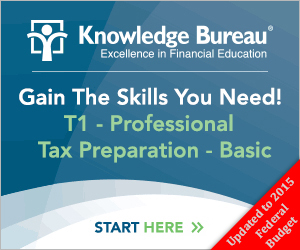Last updated: July 21 2015
Two-Parent Families With Kids: $85,000 Is Median After Tax Income

The Canadian Income Survey for 2013 was released by Statistics Canada on July 8. While things are virtually unchanged from 2012, some interesting facts emerge about the income levels earned by Canadian families.
The survey defines market income as “earnings, private pensions as well as income from investments and other sources such as support and disability payments”. After-tax income is defined as the total of market income and government transfers, less income tax. The survey also defines those who live in “economic families”, as groups of two or more people who live together in the same dwelling who are related by blood, marriage or common-law, adoption, or in a foster relationship. For the purposes of this article, we’ll call all others, “singles”.
It is clear that when it comes to making ends meet, the numbers squarely favour economic families over singlehood:
- Senior families. Where the highest earner in the family was 65 years or older (senior families) median after-tax income was $52,500 in 2013. Singles in this age group has after-tax income of $25,700.
- Non-senior Families. Median after tax income in this group was $77,100; for singles in this group the after-tax income was $29,800.
- Parents with Children. Two-parent families with children had median after-tax income of $85,000. Lone parent families had median after tax income of $41,700, with families headed by a woman earning slightly less: $39,400.
According to the survey, the median amount of income tax paid, including both federal and provincial tax, by non-senior families was $11,700 in 2013; in contrast, the median paid by senior families was just $3,100.
How much do top earners make? The top 10 percent of earners are economic families and singles with an after-tax income of more than $130,600. And in that top decile, average after-tax income was $183,600. After taxes, Canadians in the highest decile had 23.7% of all after-tax income in Canada in 2013, while the four lower deciles together accounted for 19.8% of total after-tax income.
The bottom line for all taxpayers – regardless of earning level - is that what you keep is more important than what you make. What can tax and financial advisors do to help their clients accumulate, grow, preserve and transition more wealth, as prescribed under a Real Wealth Management™ model? Here are some suggestions for your next discussion with your clients:
For two-parent families: Two-parent families are able to take advantage of the Family Tax Cut, first introduced for the 2014 year. By averaging out family income, two-parent families whose incomes are in different tax brackets are able to retain up to $2,000 in their pocket that would otherwise go to the government.
For example: A two-income family with parents earning $75,000 and $25,000 respectively can take advantage of the FTC and reduce their combined tax bill by about $1,330. These additional funds might well be best saved within an RESP, (Registered Education Savings Plan) to take advantage of government grants and bonds available under the plan as well as the tax deferred income accumulation opportunities.
For single and two parent families: Both types of economic households – singles and couples - will be able to take advantage of the enhanced Child Care Expense deductions in tax year 2015, with increased limits of $7,000 for children under seven and $4,000 for children from 7 to 15 years of age. In addition, the Enhanced Universal Child Care Benefit has increased to $160 per month for children under 6 years (from $100), and $60 per month is now available for each child from 6 through 17 years of age starting in 2015. Lump sum payments for the enhanced amounts for of $60 a month for all children under 18 are being paid retroactive to January 2015 this week. Investing those sums into a child’s education savings or the parent’s TFSA are both great ways to leverage tax efficient investment opportunities for future financial freedom.
They may also often benefit from an increased monthly refundable Child Tax Benefit as a reduced family net income has the potential to increase or create access to the monthly refundable Child Tax Benefit. With CTB clawback rates at 12.2% for one child up to 33.3% for three or more children, the effective return on an RRSP investment for these families can be very high.
For single non-parents: Utilizing tax brackets strategically remains the best option for single, non-parent taxpayers. These individuals can maximize the use of RRSPs to reduce their income to a lower bracket, thus paying less tax annually. When taxable income has reached the lowest bracket, maximizing TFSA contributions provides further options for retirement savings and security.
For seniors: In addition to being able to claim the Age Exemption amount of $7,033, seniors can also be pro-active from a tax point of view by structuring their income levels advantageously by triggering or deferring OAS and CPP benefits. Furthermore, maximizing tax benefits through pension splitting for married or common-law seniors reduces the overall tax burden when private pension income from RRSPs or RRIFs becomes taxable.
Evelyn Jacks is President of Knowledge Bureau, home of the MFA and DFA - Tax and Bookkeeping Services Designations.

